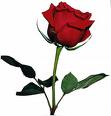
* Figs . . .
* . . . and Citrus
* Why not a Tablet? (instead of a PC) (from G & G Computer Repair)
* Vitex - Lilac Chaste Tree
* Fall Vegetable and Bedding Plants
* Helpful Websites & Additional Information
* Azaleas, 1 gallon - $3.49 each or 10 or more for $2.99 each (Just a few left!)
* Knockout Roses, 3 gallon - $11.99 (Very Nice!
* Vitex - Chaste Tree, 3 gallon - $14.99
Other than peaches and pears there are few fruit bearing trees that are as popular as Figs and Citrus in South Louisiana. Let's look at figs first.
 Celeste Fig |
The most popular and most cold hardy variety of Fig normaly grown in south Louisiana is Celeste. Over the long haul you will see more mature Celeste fig trees than any other variety in Louisiana yards. This is not because Celeste is the largest or the sweetest variety you could plant; it is because it is the easiest to grow and the most reliable. Celeste makes excellent quality small to medium browish purple figs that are quite sweet enough. When the plant is mature it makes a good crop reliably each year.
There are really only two other varieties that I feel are worth mention since most of the others are either not very cold hardy or have other problems associated with them to prompt me to cross them off of my list. Some of them may simply be unavailable in our part of the country.
 LSU Purple Fig |
The other two varieties are LSU Purple and LSU Gold. These two varieties were developed right here in Louisiana as the names suggest. LSU Purple bears medium sized figs that are noticeably larger than Celeste. In addition LSU Purple can make more than one crop per year though the second crop is late and much smaller. The only problem with LSU Purple is that it is not as cold hardy as Celeste and is not really recommended for planting in North Louisiana. If LSU Purple is frozen back it will usually come back but that is not much compensation if your plant was large and bearing well.
 LSU Gold Fig |
LSU Gold, on the other hand, is as hardy as Celeste and bears good quality figs but the fruit has an open eye that allows the entry of excess moisture that can prematurely rot the fruit especially during wet years. (Celeste and LSU Purple have closed eyes) If you have an LSU Gold fig tree be sure to pick the fruit as soon as it is ripe enough. The longer the ripe fruit hangs on the tree the more likely it is to rot in our humid Louisiana summers.
In general figs, besides hardiness considerations, are easy to grow since they have few pest problems other than birds who love figs just as much as most people do. However because of the birds and the fact that figs do not keep well when ripe you should pick figs as soon as they are ripe and eat them or process them as soon as possible.
Figs can be planted almost any time of the year if they are container grown. However you will have the easiest time growing them if you plant in the late winter or very early spring when they are still dormant. (Or in the winter if you choose Celelste.) Protect young plants from hard freezes since the tender new growth is especially susceptible to frost damage.
It is a great idea to mulch figs after planting since the root system is generally shallow. Set your new plants a bit deeper than you would for most trees. As long as you plant in an area with good subsurface drainage you can set them two or three inches deeper than they are growing in the pot. If the plant is especially tall trim the top a bit to force the dormant buds to break so you will have a well branched plant. Do all of your pruning in February or early March before the plant breaks dormancy.
Be careful when fertilizing figs since they are susceptible to damage by nitrate fertilizers (8-8-8, 13-13-13, etc.) Either do not fertilize at planting or use only slow or timed release fertilizer in small quantities. As your plant grows you can fertilize more. If you wish to use nitrate fertilizers place it away from the root ball, not on top of it. Good soil, rich in organic matter, is what figs need to thrive.
Water your fig tree well when you water; soak the ground and then let it dry somewhat between waterings. Do not keep the soil soggy but at the same time do not allow the young plants to wilt too severely. Figs need adequate water especially during the bearing season.
If you are especially interested in growing figs and if you want to know about other varieties that can be grown in south Louisiana there is a FIGS FOR COMMERCIAL AND HOME PRODUCTION IN LOUISIANA PDF available from the LSU Ag Center.
* * *
Note:
When downloading the Growing Guides from LSU Ag Center be sure to allow time for the download since the PDF files are rather large. You will need to have Adobe Reader software installed to view the files. (It is not necessary to download the optional files offered by Adobe when downloading or updating the Reader software.)
 Owari Satsuma |
Louisiana Citrus is a big money making crop in the extreme southeastern region of our state. Unfortunately most citrus varieties are not cold hardy enough to be grown in reliably where hard freezes are common.
Because of the cold hardiness problems associated with citrus I can only recommend planting Satsumas, Ruby Red Grapefruit, Meyer Lemons, Louisiana Sweet and Navel Oranges and Kumquats in our area. Be aware that even these varieties will be susceptible to damage in an especially cold winter.
 Washington Navel |
Most other varieties of citrus, including Limes, are much too tender to grow in our area when we do anticipate receiving weather with temperatures cold enough to damage and kill these plants which have no cold hardiness to speak of. In addition, I am reliably informed that the Meyer Lemon is the only variety of Lemon recommended for Louisiana planting since it does possess enough hardiness to survive most of our winters in the southern part of the state.
If you are willing to plant citrus anyway even knowing that they could be killed in a severe feeze then I recommend that you download the LOUISIANA HOME CITRUS PRODUCTION PDF from the LSU Ag Center so that you can make an informed decision before making a purchase. The Guide will give you enough information so that you can avoid buying a problem rather than an asset you expected.
 Meyer Lemon |
Now since I have warned you of the downside of citrus planting I should inform you that our area (south Tangipahoa Parish) is perfectly suitable to plant Kumquats (both tart and sweet) and all varieties of Satsuma. These plants have enough cold hardiness to survive quite well in our area (barring an especially cold winter). Louisiana Sweet and Navel oranges, Ruby Red grapefruit and Meyer lemons also have enough cold hardiness to thrive here in a protected area.
Citrus plants not only bear tasty fruit but the blooms are wonderfully fragrant. A healthy citrus tree is one of the most attractive plants I can think of, with large shiny leaves and sweet smelling blooms in the spring.
If you are feeling a bit adventurous plant a citrus plant, but first download and save the Citrus Growing Guide first so you will know how to care for them.
The citrus plants we offer for sale are 100% Louisiana Grown and grafted on Trifoliata roodstock to ensure hardiness. This year we will have a limited selection of dwarf citrus trees suitable for container growing grafted on a special rootstock called Flying Dragon Trifoliata that dwarfs the tree.
| Kumquats | |
 Meiwa (Sweet) |  Nagami (Tart) |

|
Serving the Springfield and Ponchatoula Area G & G Computer Repair 12152 Hwy 22, Ponchatoula, LA 70454 Call 985-222-5359 |

|
* * *
Before I begin:
Carrying on from my last article concerning backup I have noticed a new article from CNet describing new portable hard drives. If you are in the market for a backup device the article (Top five affordable portable drives) would be a good place to start.
* * *
What device you purchase for computing should be determined by how you want to use it. For instance, if you want an instant-on device and you simply wish to browse the internet (and screen size does not matter), get your email, listen to music, read a book or magazine or any of a number of simple tasks you may not really need a full-fledged personal computer.
However if you really want to: do a lot of typing, edit large graphics or videos, create databases or spreadsheets, play computer games that require a powerful processor or just need a device that has lots of digital storage for large files you really need a PC instead of a Tablet. If you consider flash media more secure and dependable than a mechanical hard drive then you can get a 32GB thumb drive for less than $30 to store your important files on. (That being so, why does a 32GB iPad cost $100 more than a 16GB iPad?)
Everything you can do on a tablet device you can do just as well and, some of the time, much more simply on a PC. You just can't carry it around quite as easily. Laptops are a bit more awkward to handle in the field than tablets.
Transferring files to or from a tablet can sometimes be a pain, especially if your transfer devices are connected by USB. Drag and drop is a mature technology and works just as advertised on a PC, but is quite frequently a little flakey on a tablet. Perhaps the manufacturers will fix this in the future but they are not there quite yet.
If price is important then consider that for what you would pay for an iPad or perhaps a comparable Galaxy Tab you can get a PC (laptop or desktop) with at least an Intel i3 processor, a larger screen, much more digital storage and running a full version of Windows 7. Sure, you could opt for a less powerful tablet but then you wouldn't have much more than glorified book reader. (Kindle Fire comes to mind.)
What it all comes down to is that if you buy an iPad or a comparable Android device then that means you just wanted it. Price shouldn't be a consideration when making this type of purchase. Perhaps, in the future, with the advent of Windows 8 there will be instant-on touch enabled devices that will have all the advantages of a current PC (including pricewise) with none of the bulky downside, but the technology is not quite there yet. Who knows, maybe the iPad 4 will be a PC killer!
Happy computing!!!
Again this year we will have a good selection of vegetable plants for fall gardens. We will start early, in late July, with fall tomatoes then a bit later in late August we should have the first plants of the fall season. Califlower, Cabbage, Lettuce, and Broccoli will be high on our list but we will also have others such as Spinach and Collards. By the time September rolls around we should have a good selection of all of these popular plants ready for sale. Below is a listing of the varieties we will have to offer.
*BROCCOLI - Packman*BRUSSELS SPROUTS - Oliver
*CABBAGE - Rio Verde, Early Jersey, Red Dynasty
*CAULIFLOWER -Incline
*CELERY - Tall Utah
*COLLARDS - Georgia
*KALE - Vates
*LETTUCE - Ithaca (head), Buttercrunch (leaf), Paris Island (Romaine), Red Sails (leaf)
*MUSTARD - Southern Giant Curled
*SPINACH - Bloomsdale
Oh, don't forget Pansy plants for bloom all through the late fall and winter (and even into early spring). Pansies shouldn't be planted too early. Mid October is early enough for them since they need some warmth to grow but cooler weather to get established properly. Some experts recommend waiting until after the first of November to plant Pansies but we know many of you want to get them in before that. We'll have both Majestic Giant and Matrix varieties which make those large flowers everyone likes. We'll also have a few Violas for those who like the smaller blooms.

Helpful Websites
LSU Agriculture Center - http://www.lsuagcenter.com/en/lawn_garden/
New! Horticulture Hints - From LSU Ag Center. This popular publication was once distributed in printed form from the County Agents but now is available only as a PDF directly from the LSU Ag Center Site.
In Louisiana -Find an LSU Ag Extension County Agent Near You
American Rose Society - Need some authoritative information on roses or want to contact fellow rosarians?
Azalea Society of America - Find out more about this highly divergent class of popular flowering shrubs.
Additional Information
Didn't like it? If you got this newsletter by mistake and don't want it or if you asked for it and are disappointed - we hope not - you may simply reply to this newsletter email with one word - UNSUBSCRIBE. That's it. We will take you off of our list immediately.
Liked it? However, if you liked it and wish to compliment, criticize or suggest, please feel free to do so. It's just as easy as unsubscribing. Just reply to this email with your helpful comments.
Have a request? Want us to get a particular plant variety for you for the fall, winter, or spring? If you let us know ahead of time and it's available we'll be certain to get just what you want.
Do you have a friend that you know would like our newsletter? Simply tell them to send an email to gmarmillion@bellsouth.net to request it and we'll send it right out to them.
Thank You,
Chris and Gary Marmillion

|
Green Thumb Nursery 12188 Highway 22 Ponchatoula, LA 70454 225-294-5089 greenthumbnsy.com |

|
